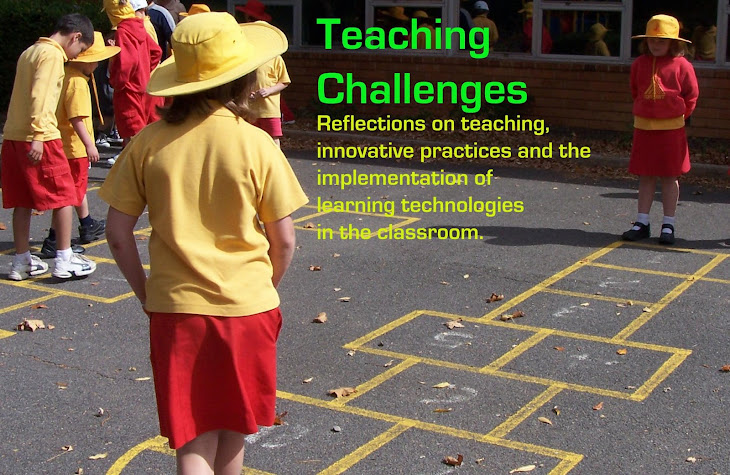Exploring Aurasma Studio with Maths
One of my coworkers has been trying to get me to look at Aurasma for quite some time, so I finally decided to take the plunge. After a little experimentation I decided to design a Maths lesson with it for our Maths rotation activities. My idea required greater functionality than the Aurasma app could provide so I went to Aurasma Studio instead. For more information on the basics of Aurasma, click here.
My idea
I wanted my lesson to involve problem solving with multiplication and division - possibly including money as a bonus. Our rotation groups are based on ability, so I wanted to embed different levels within the task so students could experience the task at their own level.
My plan
I wanted to use pictures from grocery store catalogues as triggers for pop-up questions, with secret bonus questions (as extension) to be revealed with an action. I visited the grocery store and got a group set of catalogues.
Execution
Triggers - I used my iPad to photograph images of the catalogue items and uploaded these to my iMac.
Overlays - I used Sketchbook Pro to write up question cards which I saved as images, also uploaded to my iMac. I made some 'special bonus question cards' and uploaded these to my Flickr account - as they needed to be located at a URL in order to make the task work.
In Aurasma Studio I uploaded a trigger image - one of the catalogue items. I then added multiple question cards as overlays (one a multiplication question, one a division question). Finally I added an invisible overlay over the item price which, when clicked, took the user to my Flickr image where an extension question was displayed.
In the Classroom
Four groups rotated through these activities. The first group was the extension Maths group, and while we took some time to get everyone loaded up and following my channel, they still managed to have a pretty good go at working through the questions and recording their answers in their maths workbook. I wrote the 'shopping list' on the board so that students knew which items to look for. Those students who made it through all the questions explored the 'secret bonus questions' as well. Students worked through at their own pace.
The two mid-range groups worked through the questions at varying degrees and without the need to get the iPads set up to begin with. For the support group, I asked that they begin with only the multiplication questions, returning to the division if they had time after that.
All students seemed to enjoy the activity, even with the technical complications with wifi, location services and 'following'. Some groups found it useful to capture a screenshot to refer to so that they wouldn't have to hold the iPad still the whole time. In order to mark the work with students it helped to have a copy of screenshots of all the questions.
Overlays - I used Sketchbook Pro to write up question cards which I saved as images, also uploaded to my iMac. I made some 'special bonus question cards' and uploaded these to my Flickr account - as they needed to be located at a URL in order to make the task work.
In Aurasma Studio I uploaded a trigger image - one of the catalogue items. I then added multiple question cards as overlays (one a multiplication question, one a division question). Finally I added an invisible overlay over the item price which, when clicked, took the user to my Flickr image where an extension question was displayed.
In the Classroom
Four groups rotated through these activities. The first group was the extension Maths group, and while we took some time to get everyone loaded up and following my channel, they still managed to have a pretty good go at working through the questions and recording their answers in their maths workbook. I wrote the 'shopping list' on the board so that students knew which items to look for. Those students who made it through all the questions explored the 'secret bonus questions' as well. Students worked through at their own pace.
The two mid-range groups worked through the questions at varying degrees and without the need to get the iPads set up to begin with. For the support group, I asked that they begin with only the multiplication questions, returning to the division if they had time after that.
All students seemed to enjoy the activity, even with the technical complications with wifi, location services and 'following'. Some groups found it useful to capture a screenshot to refer to so that they wouldn't have to hold the iPad still the whole time. In order to mark the work with students it helped to have a copy of screenshots of all the questions.







No comments:
Post a Comment
I'd love to hear your thoughts and questions. Please don't be shy...
:)